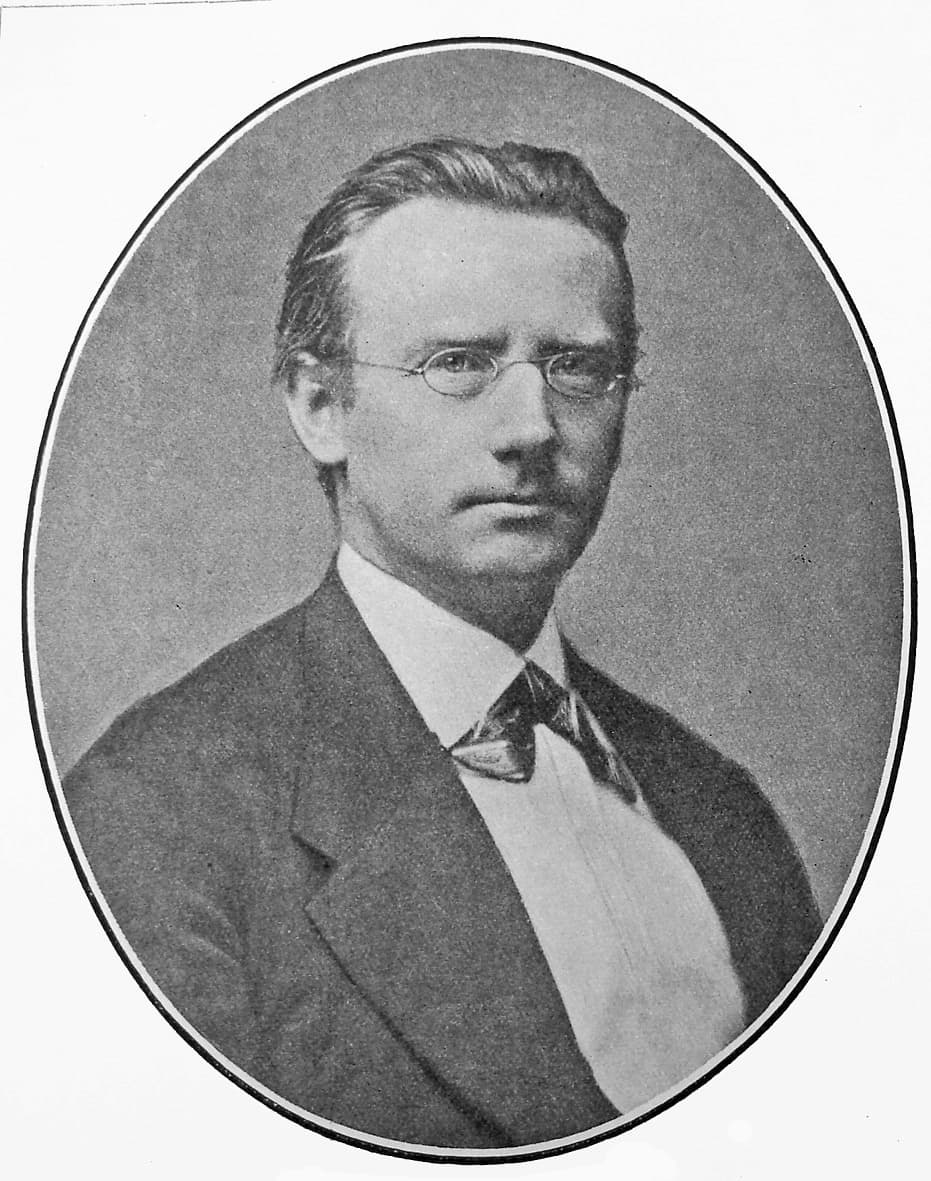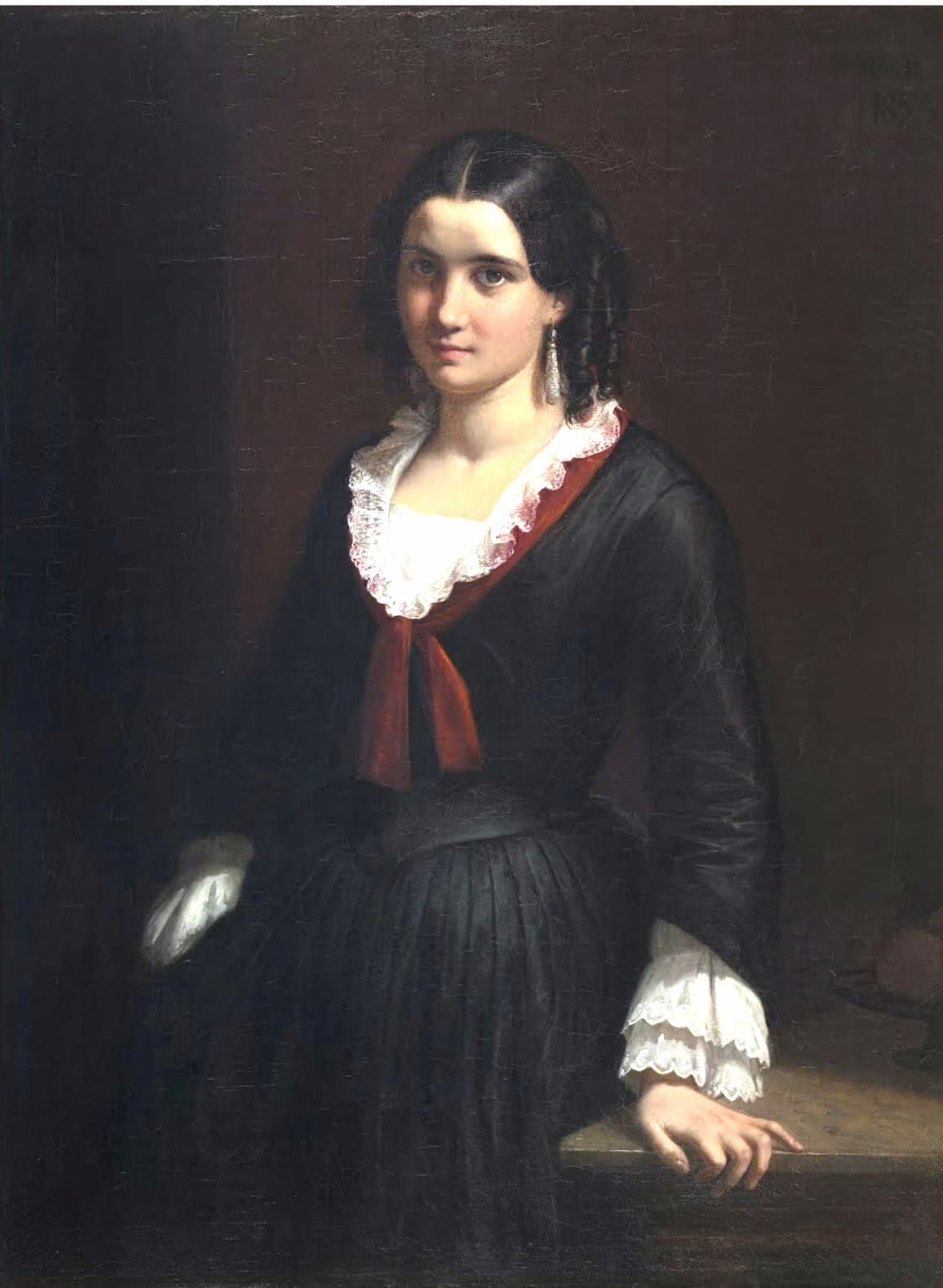Peter Arnold Heise (1830–1879) was an active composer in mid–19th-century Denmark. A student of A.P. Berggren, who was also the teacher of Niels W. Gade (1817–1890), the leading Danish musician of the day, Heise started his composing career at age 13. After his study with Berggren, he studied in Leipzig from 1852 to 1853. In Denmark in the 1840s, chamber music-making was done at home. It wasn’t until 1854 that a public concert with string quartet occurred in Denmark. The rising middle class formed a new audience for concerts, bringing music-making out of the home.

Peter Arnold Heise
Heise’s six string quartets, written between 1852 and 1857, are products of his youth, and as such, were taken out of circulation. The manuscripts for the string quartets were in the possession of the cellist Julius Holm, a childhood friend of Heise. Upon Holm’s death in 1909, the manuscripts were returned to Heise’s widow, Vilhelmine. Vilhelmine, seeking to protect her husband’s reputation, set them aside in a folder labeled ‘Youth Works’. Quartets 2 through 6 were in the Youth Works folder. Quartet No. 1 and some other works were in a folder labeled ‘Heise’s hand-written music from old times, not to be printed, maybe better burned’. Luckily, they weren’t burned but were part of the estate given to the Royal Danish Library in 1912 at Vilhelmine’s death.

Wilhelm Marstrand: Vilhelmine Heise, 1853 (Nivå: Nivaagaards Malerisamlung)
It wasn’t until Heise’s letters were published in 1930 that anyone knew he’d written string quartets, let alone six of them. Mention of a string quartet in G minor (No. 6) led to a research going through the estate manuscripts and finding the work. It was given its first public performance in 1931 and then again in 1945. Copies of quartets nos. 3, 4, and 6 circulated but it wasn’t until 2017 that the entire set of six quartets finally was published as a set.
Quartets Nos. 1-3 have just been recorded by the Nordic String Quartet in a world premiere recording, which is a difficult thing to accomplish these days. The works are over 170 years old and are jewels of composition.
Quartet No. 1, composed during the winter of 1851–52, and separated into the ‘better burned’ folder, shows no indication of use; this recording may, in fact, be the work’s first performance.
The work, despite its minor key, has a distinct humorous quality, common with other minor-key Danish works. The movement is clean and precise and shows his own familiarity with chamber music, through his own playing of the piano and the violin.
Peter Arnold Heise: String Quartet No. 1 in B minor – I. Allegro (Nordic String Quartet)
The other movements all show Heise’s classical influences. The second movement Larghetto begins rather like Schubert, but then has a middle section that’s completely Mozartian in its feeling.
Peter Arnold Heise: String Quartet No.1 in B minor – II. Larghetto (Nordic String Quartet)
The third movement, a standard Minuet, has its contrasting trio section in a very slow Haydn-esque folk style.
Peter Arnold Heise: String Quartet No. 1 in B minor – III. Menuetto – Allegro (Nordic String Quartet)
The final movement, an Allegro molto, has at its heart a very Classical fugue.
Peter Arnold Heise: String Quartet No. 1 in B minor – IV. Allegro molto (Nordic String Quartet)
The work shows Heise’s skill even in a youthful work.
For his second string quartet, Heise moved to the key of G major. He continues with the humorous quality of the opening movement, made easier here by the major key.
Peter Arnold Heise: String Quartet No. 2 – I. Allegro molto vivace (Nordic String Quartet)
After that major-key opening, the second movement, in a dark C minor comes as a surprise. It is delicately shaped, with beautiful arching lines. The middle section changes character entirely before returning to the lyrical opening.
Peter Arnold Heise: String Quartet No. 2 – II. Larghetto (Nordic String Quartet)
The third movement, a Scherzo, which takes its name from Beethoven’s addition to the symphony, also follows a rather Beethoven-esque rhythmic opening. The contrasting trio section, on the other hand, is more dance-like and tender.
Peter Arnold Heise: String Quartet No. 2 – III. Scherzo: Prestissimo (Nordic String Quartet)
The final movement, starting with some sharp pizzicato strikes, also has a set of fugal entries at the start of the second section.
Peter Arnold Heise: String Quartet No. 2 – IV. Allegro vivace (Nordic String Quartet)
The third string quartet, written after he’d returned from Leipzig, shows its stronger musical grounding. In the winter of 1852 to 1853, Heise left Copenhagen for Leipzig, and, all of a sudden, the world of Germanic music was open to him, from the Baroque to the latest by Schumann and Wagner. Heise’s musical world expanded. The earlier Danish master Niels Gade had his career breakthrough in Leipzig and we can view Heise’s position similarly.
The third string quartet now starts with a slow introduction and, instead of the humorous tone we heard in the first movements of the previous two quartets, there’s an unexpected gravity. When the Allegro starts, it’s still playful, but an adult playful.
Peter Arnold Heise: String Quartet No. 3 in B-Flat Major – I. Moderato assai – Allegro assai vivace (Nordic String Quartet)
The slow second movement of the earlier quartets is now a fast Scherzo. The trio section no longer has an entirely separate character.
Peter Arnold Heise: String Quartet No. 3 in B-Flat Major – II. Schertzo: Presto agitato (Nordic String Quartet)
It is in his third movement Andante that we can start to see some of Heise’s new techniques. Although Andante movements are generally calm sections of a work, this one manages to maintain a sub-surface tension that keeps the listener alert.
Peter Arnold Heise: String Quartet No. 3 in B-Flat Major – III. Andante sostenuto (Nordic String Quartet)
It is in the final movement that the new Heise comes through as well. It has a stormy beginning and switches between major and minor, a characteristic of Nordic folk music. This would reach a fuller realization in the idiomatic music of the later composer Carl Nielsen.
A new touch as well is the cadenza added for the first violinist at the end of the development section (05:00).
Peter Arnold Heise: String Quartet No. 3 in B-Flat Major – IV. Finale: Molto allegro (Nordic String Quartet)
We don’t have a firm date for the composition of String Quartet No. 3, except to know that it was after Leipzig. Heise wasn’t aggressive, or perhaps even interested, in getting his music published, and after his marriage in 1859 to Vilhelmine Hage, daughter of one of Denmark’s richest men, did not have a financial need to do so. Now we are in a position to reassess Heise’s music for string quartet, 170 years old and rising in interest.
For more of the best in classical music, sign up for our E-Newsletter




